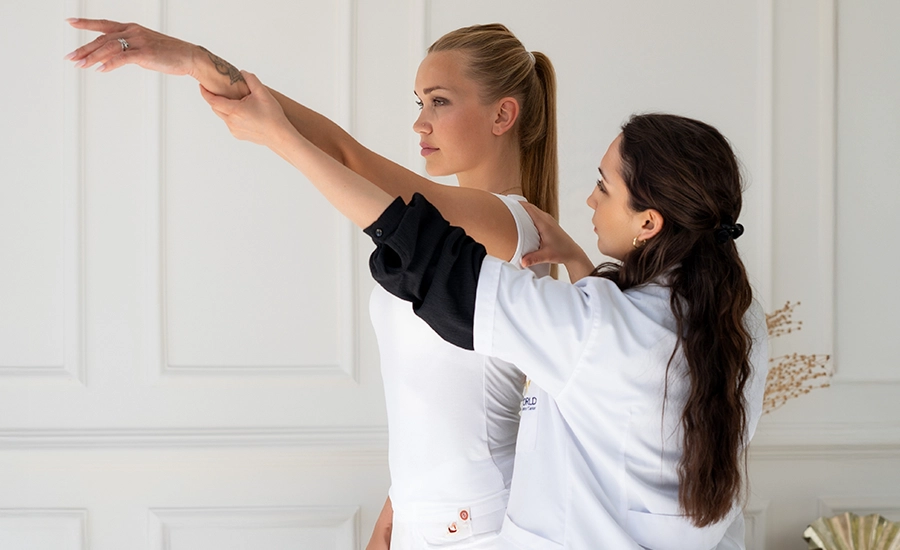The Science of Movement, The Art of Physical Healing: The Power of Physical Therapy and Rehabilitation
Life throws unexpected challenges our way. An injury from a fall, chronic pain that won’t quit, a stroke that impacts mobility, or even the natural process of aging can significantly diminish our quality of life. When these hurdles arise, many people turn to physical therapy and rehabilitation – a dynamic and essential branch of healthcare focused on restoring function, reducing pain, and improving overall well-being. Far from just exercises, it’s a holistic approach designed to empower individuals to regain their independence and lead fulfilling lives.

What Exactly is Physical Therapy and Rehabilitation?
At its core, physical therapy (PT) is a healthcare profession that helps individuals develop, maintain, and restore maximum body movement and functional ability. Rehabilitation often works hand-in-hand with PT, encompassing a broader range of services aimed at helping people recover from serious injuries, illnesses, or surgeries. Think of it as a journey of recovery, where physical therapists, along with other healthcare professionals, act as your guides.
Medworld Clinic is an officially licensed physical therapy and rehabilitation center, operating under the regulations and quality standards of the Turkish Ministry of Health. Our integrated approach, medical expertise, and commitment to patient-centered care set us apart as a trusted destination for recovery and functional restoration.
Who Benefits from Physical Therapy and Rehabilitation?
The scope of conditions addressed by PT and rehabilitation is incredibly vast. It’s not just for athletes with sports injuries! Here are some common scenarios where this specialized care proves invaluable:
- Orthopedic Conditions: From sprains, strains, fractures, and back pain to post-surgical recovery (e.g., knee or hip replacements, rotator cuff repair), PT helps restore joint mobility, strength, and reduce pain.
- Neurological Conditions: Patients recovering from strokes, spinal cord injuries, Parkinson’s disease, multiple sclerosis, or traumatic brain injuries often rely on PT to improve balance, coordination, strength, and mobility, helping them relearn daily tasks.
- Chronic Pain Management: Conditions like fibromyalgia, arthritis, and persistent neck or back pain can be significantly alleviated through tailored exercise programs, manual therapy, and education on pain coping strategies.
- Geriatric Care: As we age, maintaining mobility, balance, and strength becomes crucial. PT helps prevent falls, manage age-related conditions, and promote active aging.
Who Should Get a Full Body Check-Up?
While Full Body Check-Ups are recommended for everyone, certain groups benefit the most:
- Adults over 30 years old.
- People with a family history of chronic illness (diabetes, cancer, heart disease).
- Smokers and individuals with unhealthy lifestyle habits.
- People under high stress.
- Patients recovering from surgery or major illness.
- Anyone who has not had a health screening in the last two years.
A Collaborative Approach: Integrating with Other Medical Specialties
Physical therapy and rehabilitation rarely operate in isolation. In fact, its strength often lies in its interdisciplinary nature and close collaboration with other medical branches. As a medical professional, you’ll appreciate how seamlessly physical therapy integrates with and enhances outcomes across various fields:
- Orthopedics: This is perhaps the most obvious link. Orthopedic surgeons rely heavily on physical therapy for both pre-operative conditioning (to optimize outcomes) and crucial post-operative rehabilitation. PT ensures patients regain strength, range of motion, and functional independence after surgeries like joint replacements, fracture repairs, or ligament reconstructions. Without effective physical therapy, the success of many orthopedic procedures would be severely limited.
- Neurology: For patients recovering from stroke, spinal cord injury, or living with neurodegenerative diseases, neurologists often prescribe physical therapy to maximize neurological recovery and functional adaptation. PT works on motor control, balance, gait training, and preventing secondary complications, allowing neurology patients to achieve the highest possible level of independence.
- Occupational Health: Given your background in occupational health, you’ll recognize the vital role PT plays here. Physical therapists help injured workers return to their jobs safely by improving functional capacity, teaching proper body mechanics, and conducting work-specific rehabilitation. They also contribute to injury prevention programs in the workplace, reducing the incidence of musculoskeletal disorders.
- Sports Medicine: From professional athletes to weekend warriors, sports medicine physicians and physical therapists work hand-in-hand to diagnose, treat, and rehabilitate sports-related injuries, focusing on safe return to play and performance optimization.
This collaborative model ensures that patients receive comprehensive, coordinated care, addressing not just their immediate physical needs but also their long-term functional goals.
What We Can Achieve with Physical Therapy and Rehabilitation
Through this integrated and patient-centered approach, physical therapy and rehabilitation allows us to achieve remarkable transformations:
- Significant Pain Reduction: By addressing the root cause of pain through targeted exercises, manual therapy, and education, we help patients find lasting relief from acute and chronic pain.
- Restored Mobility and Function: We empower individuals to regain their ability to move freely, whether it’s walking, reaching, lifting, or performing daily tasks, thereby restoring independence.
- Improved Strength, Balance, and Coordination: Through tailored exercise programs, we enhance physical capabilities, reduce the risk of falls, and improve overall physical performance.
- Enhanced Quality of Life: By alleviating physical limitations and pain, we enable patients to return to their hobbies, work, and social activities, leading to a richer, more fulfilling life.
- Prevention of Further Injury or Disability: We equip patients with the knowledge and tools to manage their conditions independently, practice proper body mechanics, and prevent future injuries or the progression of existing disabilities.
- Optimized Post-Surgical Outcomes: For those undergoing surgery, we play a critical role in accelerating recovery, reducing complications, and ensuring the best possible functional return.
- Delaying or Avoiding Surgery: In many instances, effective physical therapy can help patients avoid the need for surgery altogether by improving underlying musculoskeletal issues.
The road to recovery and beyond is a journey of collaboration and dedication. If you’re experiencing pain, limited movement, or recovering from an injury or illness, consult with your doctor about whether physical therapy and rehabilitation could be the right path for you. It’s a proactive step towards unlocking your body’s full potential and enhancing your overall quality of

Frequently Asked Questions (FAQ) about Physical Therapy and Rehabilitation
Q1: What’s the difference between a physical therapist and a chiropractor?
A1: While both professions deal with musculoskeletal issues, their approaches differ. Physical therapists focus broadly on restoring movement, function, and quality of life through a variety of techniques including therapeutic exercise, manual therapy, modalities, and patient education. They address a wide range of conditions from neurological to orthopedic. Chiropractors primarily focus on spinal alignment and nervous system function, often using spinal adjustments (manipulations) to correct what they call “subluxations.”
Q2: Do I need a referral from a doctor to see a physical therapist?
A2: At our clinic, every physical therapy patient is first seen by a physician to ensure a comprehensive assessment and to guide the treatment process effectively.
Q3: How long does a typical physical therapy session last?
A3: A typical physical therapy session can range from 30 minutes to an hour, depending on your condition, the specific treatments being performed, and the clinic’s protocols. Initial evaluations often take longer than follow-up sessions.
Q4: How many physical therapy sessions will I need?
A4: The number of sessions needed varies greatly depending on the severity and nature of your condition, your progress, and your adherence to your home exercise program. Some acute injuries might only require a few sessions, while chronic conditions or post-surgical recovery could necessitate several weeks or even months of therapy. Your physical therapist will regularly assess your progress and adjust your treatment plan accordingly.
Q5: Will physical therapy be painful?
A5: While some discomfort or soreness can be expected, especially as you work to regain strength and mobility, physical therapy should not be overly painful. Your therapist will work within your pain tolerance and gradually progress you. It’s crucial to communicate any pain you experience during exercises or treatments so they can adjust the plan. The goal is to reduce pain, not increase it.
Q6: Can physical therapy help avoid surgery?
A6: In many cases, yes! For certain orthopedic conditions like back pain, knee pain, or rotator cuff issues, physical therapy can often be an effective non-surgical treatment option, helping to strengthen supporting muscles, improve joint mechanics, and reduce pain. Of course, this depends on the specific condition and its severity. Your doctor and physical therapist can help determine if PT is a viable alternative to surgery for your case.
Q7: What should I wear to my physical therapy appointments?
A7: Wear comfortable, loose-fitting clothing that allows for easy movement and exposes the area being treated if necessary. For example, if you’re working on a knee issue, shorts would be appropriate. If it’s a shoulder issue, a t-shirt or tank top would be good.